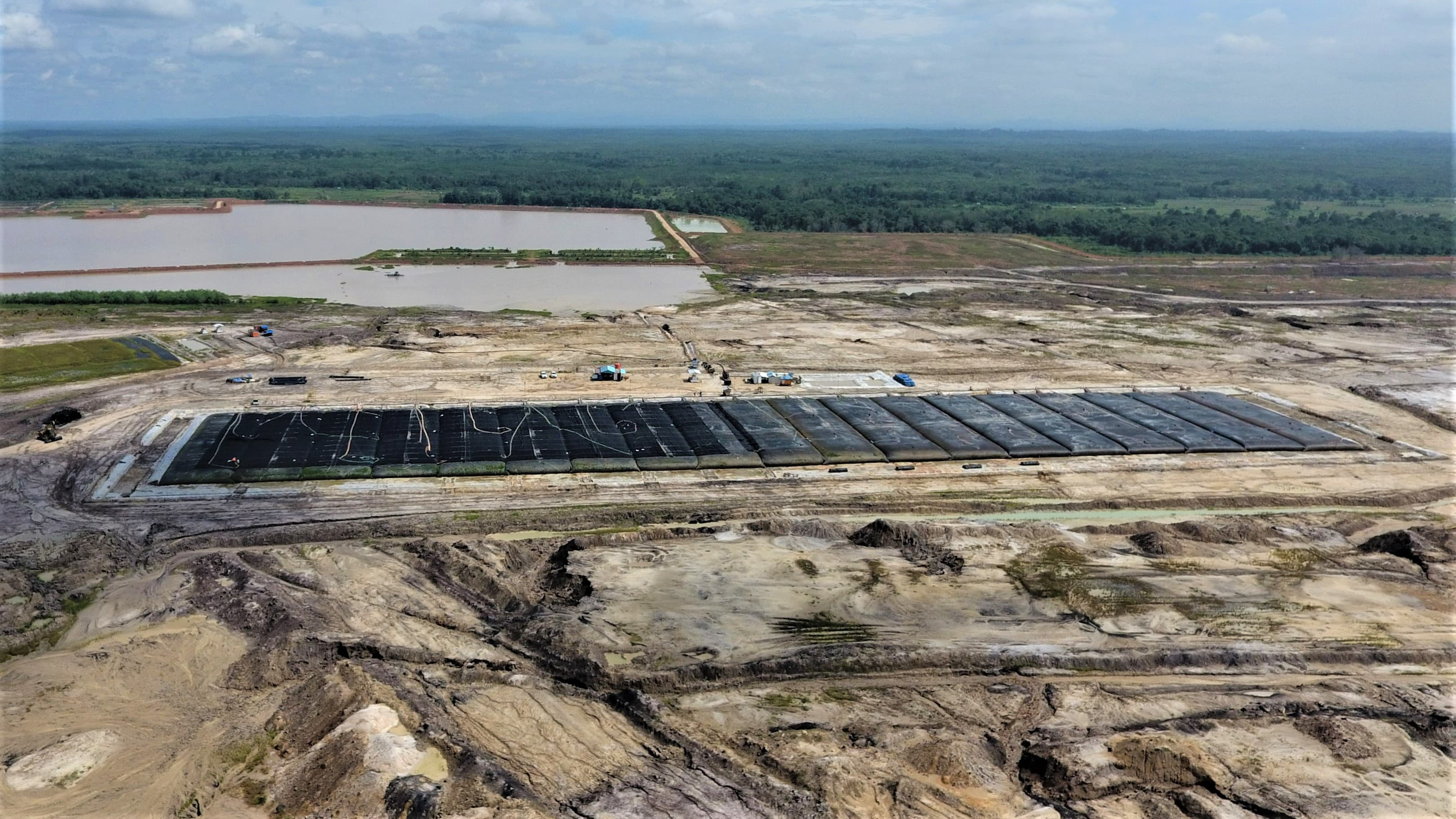
How GEOTUBE is used in the dewatering of mine and mineral slurries
GEOTUBE® systems are well-established for dewatering various slurry types, optimal for industrial wastewater, mining, agriculture, municipal, and environmental dredging.
The table provided showcases solid slurry concentrations handled and the resulting dewatered solids concentrations. Notably, GEOTUBE dewatering offers a significant increase in dryness; however, ensure you observe the units of measurement. Results can vary based on slurry composition.
A unique aspect of mining slurry dewatering is the emphasis on mass rather than volume, affecting the GEOTUBE dewatering tube's capacity and safe working limits. Rigorous quality assurance testing ensures the GEOTUBE meets seam strength requirements, determining the unit's volume capacity and tube quantity for projects.
Note: Performance metrics are based on GEOTUBE fabrics and are not applicable to tubes made from other materials.
Design & feasibility
All projects prioritize the fabric's capability in dewatering the pumped slurry. Costs involve evaluating suitable tube configurations and slurry volumes.
Cost breakdown
Mining slurries: cost is measured in $/ton ($/short ton).
Non-mineral slurries: usually $/m³ ($/yd³) solids.
Comparing GEOTUBE to traditional dewatering considers equipment capital, operation, maintenance, and infrastructure costs. Generally, GEOTUBE systems excel with specific slurry volumes and assist in addressing operational challenges.
GEOTUBE systems are pivotal in environmental clean-ups, re-processing of mineral-rich deposits, and water recovery from acid mine drainage.
Operational aspects
Post technical clarifications, attention shifts to practical implementation, covering deployment, polymer dosing, safety, and manpower requirements. The key query is, "who will execute the project?"
Two approaches exist:
1. Skilled specialists, ideal for:
Large tube usage
High slurry flows
Tube stacking
Accurate polymer dosing
Specialist dredging needs
2. On-site personnel can manage simpler tasks, given sufficient bandwidth for proper tube operations.
Safety & other concerns
Safety is paramount on mining sites, especially when stacking GEOTUBE dewatering tubes. Issues like walkway space, drainage access, tube positioning, and pumping control need planning. Larger projects with more units have heightened risks and require skilled personnel.
Solmax offers comprehensive support for GEOTUBE dewatering technology, covering design, installation, and operations. They provide Proof of Concept tube units for on-site design verification at no cost and experienced engineers for site deployment guidance.
Explore more blogs
View allWhat are the key considerations in designing reinforced soil slopes?
A technical overview of reinforced soil slopes (RSS) in geotechnical engineering, focusing on design, erosion control, and innovative materials for slope stability.
How to combine engineered earth armoring with greywater treatment
Resilient water management by combining greywater recycling with engineered earth armoring for irrigation, erosion control, and increased property value.
How can geosynthetics help energy transition?
Geosynthetics accelerate agricultural outputs and improve resilience by optimizing water management through enhanced irrigation efficiency and providing structural stability to agricultural infrastructures like dams and reservoirs.